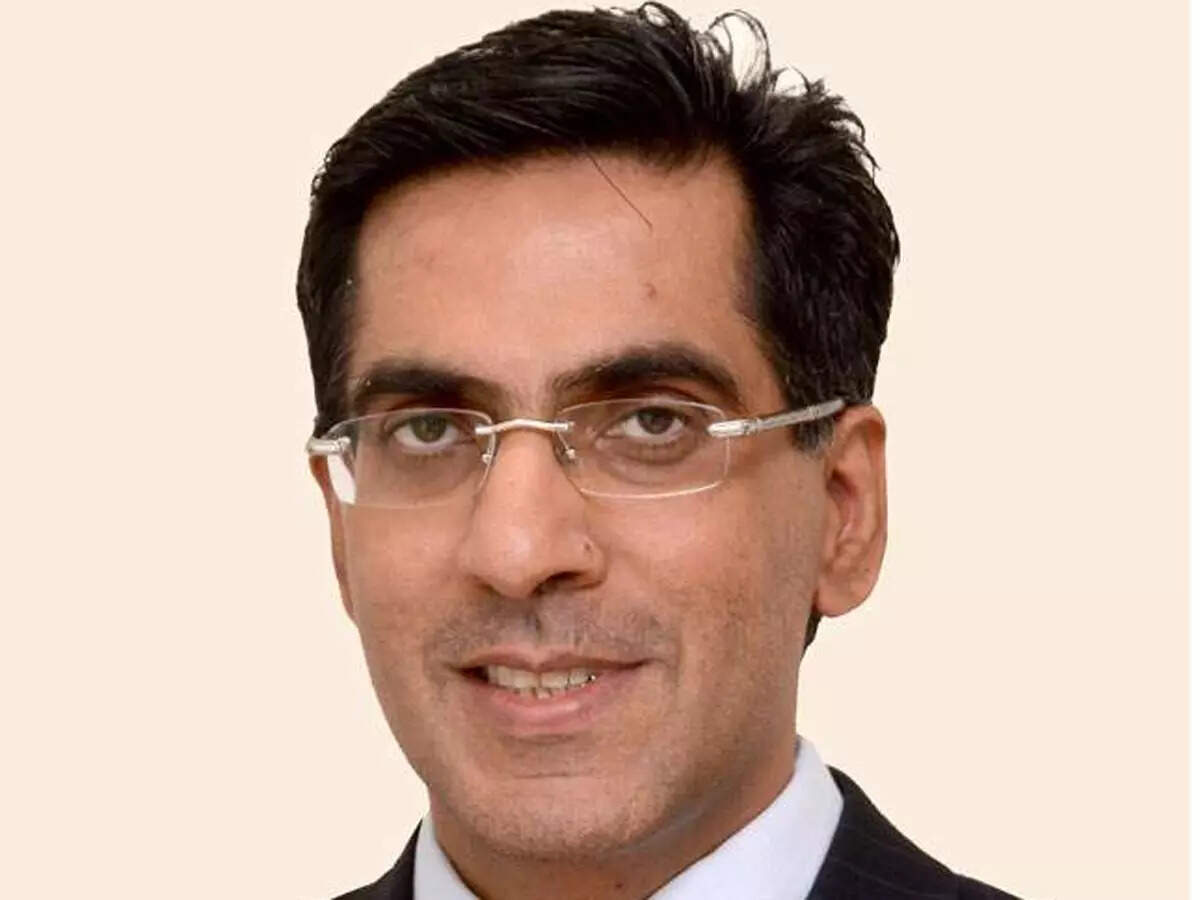
Mukul Kochhar, Head, Institutional Equities, Investec Capital Services, says , even though the probability of a negative or a disappointment in the election for the markets is very, very low, the outcome or the impact is going to be so severe that everybody today has stood up and started paying attention to what is happening to election related news flow. So, there is a definite change versus three weeks back to our conversation around this.
You have put out a high frequency data story in charts but just anecdotally you must be interacting with a lot of clients and top of the mind is elections. What are the range of outcomes, what are the kinds of hypotheses you are building in? It may not be a very large issue for a long term, but for the medium term clearly it is something to watch out for as a monitorable.
Mukul Kochhar: What makes this election more interesting than some of the others in the past is the level of complacency that we went into the elections with. Let me elaborate on that a little bit. The multiples were quite punchy. Honestly, it reflects the business momentum in the economy. The business momentum in the economy is very, very strong. But there was pre-elections hardly any debate about what is going to happen in the election outcome.
So, there was this general sense that, okay, elections are a done deal. Now, that conversation has changed a bit. I am not saying that the outcome is any different or we expect the outcome to be any different versus what we thought three or four weeks back. Having said that, the range of outcomes, if the election does give you a surprise, is so steep. At one end, we are looking at maybe 10% to 20% downside depending on who you speak to and on the other hand upside is going to be fairly muted or this is going to be somewhat there if outcome is as expected, because that is largely priced in.
So, even though the probability of a negative or a disappointment in the election for the markets is very, very low, the outcome or the impact is going to be so severe that everybody today has stood up and started paying attention to what is happening to election related news flow. So, there is a definite change versus three weeks back to our conversation around this.
There is a view that this earning season, the top line growth is not very healthy across sectors; only certain sectors are showing top line growth and the margin expansion was showing because lower commodity prices may be also at risk in the coming quarters. What have you made of the earnings? How will this business momentum which you are referring to, translate to earnings in the next few quarters?
Mukul Kochhar: Let me first talk about the business momentum and then I will address the earnings question, both are good questions. When we speak about the economy today, you cannot isolate a very major global economic event that happened two years ago, which is COVID. So, COVID created substantial stress in household savings across the world, globally. In the US, the federal government ran massive deficits to supplement those savings, so the consumer is very strong.
In India, we did nothing like that, so the consumer obviously is still feeling the brunt of what happened during COVID. However, our forward looking outlook is exceptionally sort of good here. So, the consumer is recovering, then the pockets of consumers are good. Two-wheeler sales have been exceptional even though they are off pre-COVID.
Where we derive our optimism from is the nascent shoots in the private capex cycle. I remember I spoke about this in your last show as well. We expect the private capex cycle to be exceptionally strong over the next three to five years if the current dispensation continue and there is stability and we expect the private capex momentum to be exceptionally strong and that is predicated on the fact that BSE 500 earnings have been very, very strong over the last three to five years.
So, post-COVID, pre-COVID earnings of the BSE 500 were four to five trillion. In FY25, we expect that same earning for BSE 500 to be fourteen-and-a-half trillion rupees. Our analysis also reveals that the private companies have a tendency to invest whatever PAT they make or whatever profit they make back into capex. So, we expect almost INR 7 to INR 8 trillion of incremental private capex to come into the economy which is not a small number. This is $100 billion. It is also roughly 70% to 80% of the base central government capex that we do every year. We expect private capex to be strong, which is going to drive GDP growth, employment and more healthy consumption going forward, that is the reason why I am saying business momentum is strong.
Earnings for the last two years have been fourteen-and-a-half trillion rupees. This is based on substantial year-on-year earning growth. So, up till FY24, earnings have been strong, margins have been expanding, which is what has been driving the market rally too. By the way, the entire market rally where people have made decent money from markets has been driven on the back of earnings growth. Multiple has expanded. We are at five-year average multiples in the market. So, it is a very healthy market which we see today.
Going forward also, I expect earnings to be healthy. One small pointer, as you mentioned margin, there is a decent difference between your input cost inflation, which is measured through WPI, that is roughly zero percent today and CPI is at 5%. I do not want to complicate it too much. All I want to say is that companies have more pricing power today or they are able to exert more pricing power than the input cost inflation they are seeing. So, margins going forward are also going to be healthy and we will see reasonable expansion in that.
What about earnings quality momentum from here on? BSE 500 is a very good representative. It covers a breadth of sectors and the larger indices are very narrow in my view. Which sectors in your view will lead the earnings momentum from here next two to three years?
Mukul Kochhar: We are very bullish on financials. On a sequential basis, financials across the board, all lending franchises have seen a very, very strong growth. For instance, you would be surprised that on a sequential basis, PSU banks have registered north of 25% as a sequential basis PAT growth. Similarly, there is a double-digit growth in private banks.
So, financials across the board given RBI’s actions in the sector, will see differentiated advances growth across franchises which will create pricing power in the sector. NIMs or margins in banking sector will stabilise. So, there will be good profit growth going forward as well on the back of reasonable profit. This combined with the fact that the sector itself has not worked too much in the last couple of years, make us quite bullish on the lenders. In the financial space, we also like other plays like life insurance, general insurance, as well as wealth managers. We are very positive and expect good earnings momentum in the financial space.
We are also quite positive on pharma. On the basis of more capital discipline in the sector and our analysts had a very good call on the space, counter consensus and he continues to be bullish. So that is another sector we are backing. Automobiles, really, really like automobiles, two wheelers especially, see further upside on earnings despite the fact that the sector has worked very well, we have been backing this call for the last two years, we have written it, but we still like the business momentum there and the multiples are also fairly reasonable. On the negative side, we are sort of cautious on FMCG, both on the multiples as well as earnings there.
There was a very synchronous kind of a positive commentary from all consumer companies, Dabur, Britannia, Marico, all of them started talking about second half recovery and green shoots. Are you convinced or would you like to see more evidence before you go positive on that?
Mukul Kochhar: Honestly speaking, the economy is going forward and I am all assuming continuity. If the market goes defensive on Tuesday and the nature of consumption in India changes, savings basket changes, etc, it is a different story. But what we see is a premiumising consumer which is able to meet their basic needs. So FMCG consumption in his basket is going to come down, he is going to do more discretionary consumption, premiumised consumption, as well as savings. That is the picture of the consumer we are looking at. So, broadly, volume growth which has come down for FMCG companies, while they may be talking about a small two quarters sort of bubble here or there.
We think that the volume growth that has come down for FMCG companies is quite structural and valuations, as you already know, or anybody involved in the Indian markets they FMCG companies have punchy valuations. So, we are ignoring this small sort of upside that has happened in this quarter, short covering based on positive commentary. We think if the current dispensation continues, the current regime continues, staple consumption especially in India will be weak.
Your thoughts on metals, interestingly the space is doing well and at least the largecap metal pocket in India, many of them have some special situations brewing, but what are your thoughts on metals and also steel in particular?
Mukul Kochhar: So, nothing very big there. It is a global sector, very-very noisy. We are sort of more positive non-ferrous than ferrous. Broadly, I will leave it at that. I do not really have a very, very strong call on metals at one time. It is easier to call metals when they are at a peak or at a bottom, but they are neither here nor there right now and it is very volatile sector. I reserve my comment there.
Your team has been studying the high frequency data. Net-net, what is the forward-looking picture on the economy which you are gathering from there?
Mukul Kochhar: As I said, capex shoots are there. Private capex is looking very good. Tax collections are good. So, in one way, it speaks to the consumer as well because income tax collection is good, airline travel is good. We put the quarterly reports of earnings there. The quarterly reports are sort of mixed. As I said, the consumer segment is not out of the woods. Those stocks had a tough couple of years under COVID and they have not completely repaired their balance sheets. But where we are seeing good green shoots is on the investment side, which is going to lead recovery for next five years.

